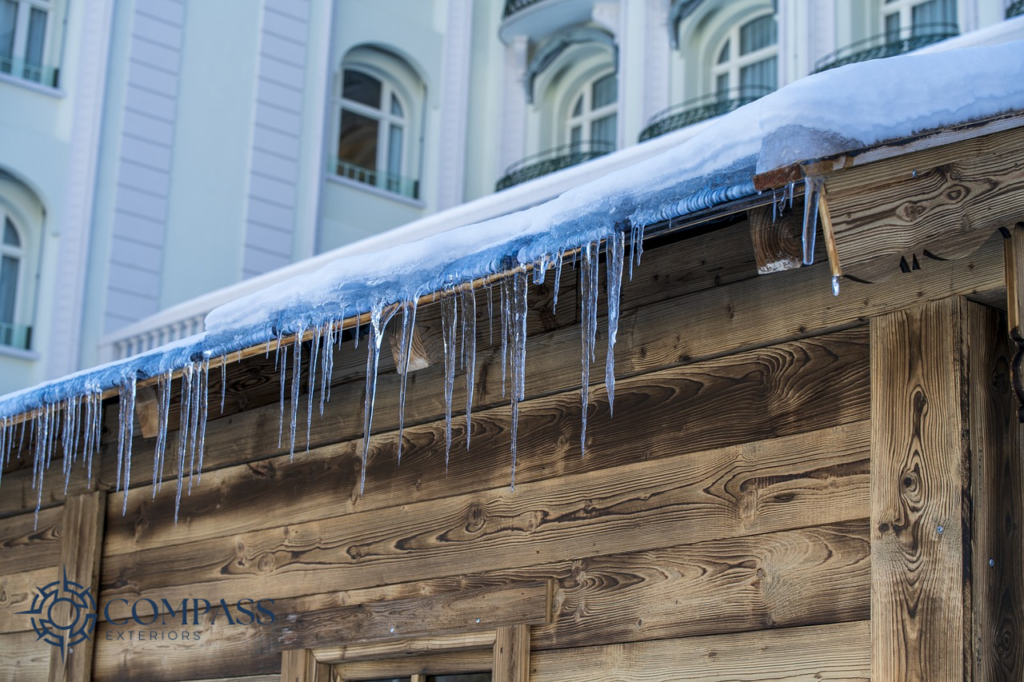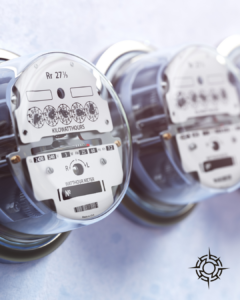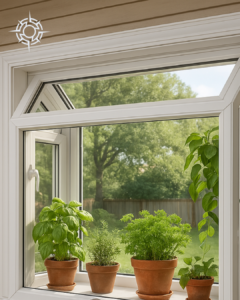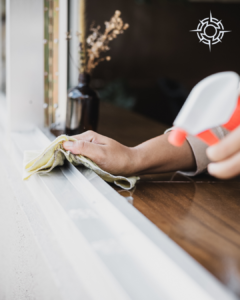Welcome to Minnesota, a state known for its vibrant seasons and particularly its distinct winter experience. If you’re new to the North Star State or have recently stepped into the world of homeownership here, understanding Minnesota’s winter weather is essential for a comfortable and safe season.
What Makes Minnesota’s Winter Weather Unique?
Minnesota winters are characterized by their intensity and duration. The season stretches from November to March, and sometimes longer, bringing with it frigid temperatures that often dip below freezing. The state’s geographical location contributes to these severe conditions, with Arctic air masses frequently descending from Canada, bringing with them heavy snowfall and ice.
For new homeowners or those unaccustomed to such harsh winters, this weather can be challenging. Keeping your home warm and safe becomes a top priority. The cold can affect everything from your heating bills to the structural integrity of your home.
The Challenge of Ice Dams for Minnesota Homeowners

A significant concern for Minnesota homeowners during winter is the formation of ice dams on roofs. An ice dam is a ridge of ice that forms at the edge of a roof and prevents melting snow from draining off the roof. This phenomenon occurs when the roof over the attic gets warm enough to melt the underside of the snow on the roof. As the water flows down the roof, it refreezes at the colder eaves, creating an ice dam.
But why is this more of an issue in Minnesota? The state’s cold climate, combined with periodic warm-ups, creates ideal conditions for ice dam formation. Poorly insulated and ventilated attics exacerbate the problem. In these conditions, the warmth from your house can escape through the roof, melting the snow from underneath. When the water reaches the eave of the roof, where it’s colder, it refreezes.
The consequences of ice dams can be significant. They can cause water to back up under the roof shingles and leak into your home, leading to damaged ceilings, walls, and insulation. Over time, this can lead to mold and mildew, and in extreme cases, it can compromise the structural integrity of your roof.
Ice Dam Prevention Tactics for Minnesota Homeowners

Minnesota’s winters bring not just a blanket of snow but also the challenge of ice dams on our roofs. Don’t worry, though—there are several effective ways to prevent these icy invaders. Let’s explore some practical tactics to keep your home safe and dry during the winter months.
Stopping Ice Dams Before They Start
The key to preventing ice dams is to keep your roof evenly cold. This can be achieved by ensuring your attic is well insulated and ventilated. By maintaining a consistent temperature, you prevent the underside of the roof from melting the snow. Additionally, sealing any air leaks in your attic floor will stop warm indoor air from creeping up and causing uneven melting on the roof.
Gutter Heaters: A Warm Solution
Gutter heaters, also known as heat cables or heat tape, are a popular method to prevent ice dams. These heaters are installed in your gutters and along your roofline. When switched on, they generate just enough heat to keep snow and ice from freezing in your gutters. This way, water from melted snow can flow freely, preventing the formation of ice dams. While effective, they’re more of a temporary fix and should be part of a broader strategy including insulation and ventilation.
The Role of Roof Raking
Roof raking is a simple yet effective way to prevent ice dams. By using a roof rake—a long-handled tool designed for safely removing snow from roofs—you can prevent snow accumulation. The trick is to gently rake off snow within three to four feet of the gutters. This task requires some effort, but it’s a proactive approach to stop ice dams before they even start. Be careful not to damage your roof shingles while raking.
Ice Melt Pucks: A Convenient Option
Ice melt pucks are an innovative solution for ice dam prevention. These pucks are made of calcium chloride, which effectively melts ice and snow. You place them on your roof in areas prone to ice dam formation. They slowly release the melting agent, preventing ice from building up. It’s essential to use them cautiously, as overuse can damage your roof and gutters.
Lesser-Known Tactics
- Improving Attic Insulation: Upgrading the insulation in your attic is a less visible but highly effective way to prevent ice dams. It keeps the heat in your home, preventing it from escaping through the roof.
- Installing a Metal Roof: If you’re considering a new roof, a metal roof can be a great investment. Snow and ice slide off more easily, significantly reducing the risk of ice dams.
- Using a Dehumidifier: In some cases, using a dehumidifier in your attic can reduce the amount of warm, moist air that rises to the roof.
In conclusion, while each of these methods has its merits, the best approach to preventing ice dams is a combination of tactics. Regular maintenance, combined with improvements in insulation and ventilation, can go a long way in keeping your home safe from the icy grip of winter.
Immediate Responses to Ice Dams for Minnesota Homeowners
Even with the best prevention tactics, sometimes ice dams can still form on our roofs during Minnesota’s harsh winters. But don’t fret! There are immediate steps you can take to mitigate this icy challenge. Let’s dive into what you can do right away if you spot an ice dam forming on your roof.
Spotting and Addressing Ice Dams Early
First things first: recognize the signs of an ice dam. Look for ice building up at the edge of your roof or icicles forming. These can be telltale signs that water isn’t draining properly and might be seeping under your roof shingles.
Safe DIY Methods
If you’re tackling an ice dam yourself, safety is key. Here are a couple of homeowner-friendly methods:
- Calcium Chloride Ice Melt: This is a great first line of defense. You can use calcium chloride (not rock salt, as it can damage your roof) to melt the ice. Fill a nylon stocking with calcium chloride and place it perpendicular to the ice dam, so it creates a channel for water to flow down. Remember to protect any plants below from the runoff.
- Roof Rake: If the dam is within reach and your roof isn’t too steep, carefully use a roof rake to remove snow from the roof, preventing further growth of the ice dam. But be gentle to avoid damaging your roof shingles.
When to Call a Professional
There are certain situations where it’s best to call in the pros:
- Inaccessible or Steep Roofs: If your roof is steep or hard to reach, don’t risk your safety. Professional roofers have the right equipment and experience to handle the job safely.
- Large or Stubborn Ice Dams: If the ice dam is extensive or particularly stubborn, a professional can remove it effectively without causing damage to your roof.
- Signs of Water Damage: If you notice water stains on your ceiling or walls, it’s time to call a professional. This could mean the ice dam has already caused leakage, and you need expert assessment and repair.
Prevention is Still Key
Remember, while these immediate responses can be effective, they are more of a reactive approach. Continuous maintenance and prevention strategies are essential to avoid the formation of ice dams in the first place.
In summary, while you can handle some smaller ice dams safely on your own, don’t hesitate to call in professionals when the situation is beyond your comfort zone or skill level.
Navigating Winter in Minnesota: Additional Considerations for Ice Dams
Welcome to the heart of winter in Minnesota! While we’ve already explored how to handle and prevent ice dams, there’s more to consider for a truly cozy and efficient winter. Let’s dive into some additional aspects that every Minnesota homeowner should keep in mind.
Ice Dams and Your Energy Bill
Did you know that ice dams can actually affect your heating costs? When ice dams form, they often indicate that heat is escaping from your home, usually through the attic. This not only contributes to the formation of the dam but also means your heating system has to work harder to keep your home warm, leading to higher energy bills. By effectively managing ice dams, you’re also improving your home’s energy efficiency – a win-win situation!
Seasonal Maintenance Tips
Preparing your home for Minnesota winters is crucial. Here are a few tips to keep your home warm and ice-dam-free:
- Check and Upgrade Insulation: Before winter hits, make sure your attic insulation is up to par. This keeps heat inside your home, reducing the risk of ice dams.
- Inspect and Clean Gutters: Clear gutters ensure that melting snow can drain properly, reducing the chances of water freezing at the eaves.
- Roof Inspection: Have a professional check your roof for any damages or weak spots that might be vulnerable to ice dams.
Insurance Coverage for Winter Damage
Winter can be tough on homes. It’s a good idea to review your homeowner’s insurance policy to understand what’s covered in terms of winter-related damage. Look for coverage that includes water damage due to ice dams and roof damage. If your current policy doesn’t cover these, consider updating it. It’s always better to be safe than sorry when it comes to protecting your home.
Key Takeaways for Managing Ice Dams
As a Minnesota homeowner, keeping these points in mind can save you a lot of hassle:
- Prevention is Key: Regular maintenance and preparation can prevent the formation of ice dams.
- Safety First: If you’re dealing with an ice dam, prioritize safety. Call professionals if the situation is beyond your expertise.
- Efficiency Matters: Managing ice dams helps maintain your home’s energy efficiency, which can lead to cost savings.
The Bigger Picture: Energy Efficiency and Cost Savings
Effectively managing ice dams is not just about protecting your home; it’s also about efficiency. By ensuring your home is well-insulated and ventilated, you’re not only preventing ice dams but also keeping your home warmer with less energy. This means lower heating bills during the winter months.
Professional Intervention for Ice Dams: The Compass Exteriors Approach
In the thick of Minnesota’s winter, battling ice dams can feel like a never-ending struggle. But fear not! Professional services like Compass Exteriors are here to bring expert solutions to your icy woes. Let’s explore how a professional touch can make a world of difference in managing and preventing ice dam damage.
Expert Identification and Repair of Ice Dam Damage
Ice dams can be sneaky; sometimes, the damage they cause isn’t immediately obvious. Professionals from Compass Exteriors have a trained eye for spotting these issues. They’ll inspect your roof thoroughly, identifying not just the obvious ice dams but also any underlying problems that might not be visible from the ground. This could include damaged shingles, leaks, or areas prone to future ice dam formation.
Once the issues are identified, the repair process begins. This isn’t just about removing the ice dam; it’s about fixing any water damage it may have caused to your home. This can include repairing or replacing roof shingles, fixing insulation, and ensuring your attic and roof are in top shape to withstand future winter challenges.
Long-Term Solutions for Frequent Ice Dam Issues
If your home is a repeat victim of ice dams, Compass Roofing can offer long-term solutions. These might include:
- Improving Attic Insulation and Ventilation: This keeps your roof temperature consistent, reducing the chances of snow melting and refreezing at the eaves.
- Installing Heat Cables: Strategically placed cables can prevent ice formation along your roofline.
- Roofing Material Upgrades: In some cases, changing your roofing materials to ones that are more resistant to ice dam formation can be a game-changer.
These solutions are tailored to your specific home and situation, ensuring that the measures taken are effective and durable.
The Importance of Professional Assessment and Repair
Why go professional? Here’s why:
- Safety First: Dealing with ice dams can be risky, especially if you’re not experienced. Professionals have the right tools and safety equipment to handle the job without accidents.
- Quality Workmanship: Repairing damage caused by ice dams isn’t just about a quick fix. It requires skilled workmanship to ensure the problem doesn’t recur. Professionals guarantee a high standard of repair.
- Prevent Future Problems: Professionals don’t just fix the current issue; they look at your home as a whole to prevent future problems. This proactive approach saves you time and money in the long run.
In conclusion, while dealing with ice dams can be a daunting aspect of Minnesota winters, having a professional service like Compass Exteriors on your side can make all the difference. With their expertise in identification, repair, and prevention, you can rest easy knowing your home is in good hands. Stay warm, stay safe, and enjoy the beauty of a Minnesota winter!











